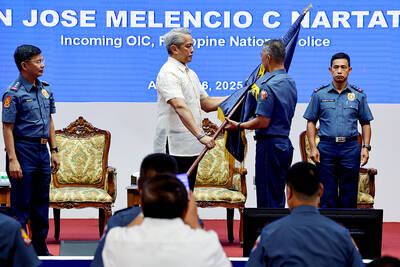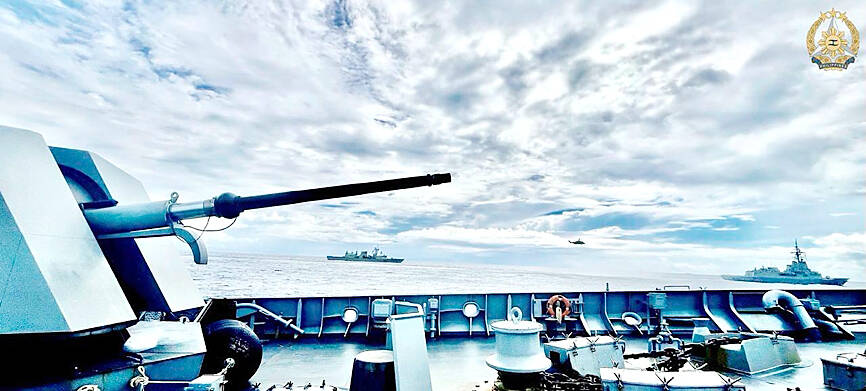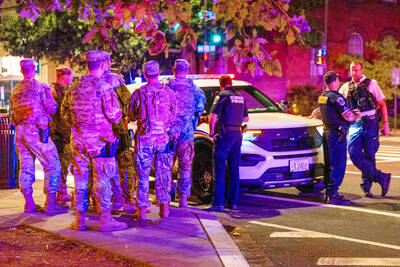They roamed the savannahs and open plains for thousands of years, but the hunter-gatherer lifestyle of southern Africa's San tribes is slowly being squeezed towards extinction.
After clashing at the start of the last century with German settlers in modern-day Namibia and then being exploited by South Africa's apartheid regime in the 1980s, the San, also known as Bushmen, are now threatened by the 21st century curses of unemployment, poverty, alcohol abuse and HIV-AIDS.
While the plight of the San in Botswana made headlines in recent months when authorities illegally evicted tribes from the Kalahari, their kinsmen in Namibia and South Africa have fared little better in protecting their traditional habitat.
A glimmer of hope lies in tourism as operators discover this remote part of Namibia where the likes of Gcao Nari, a grandmother of the Juhoansi San tribe, showcase the ancient art of threading ostrich shell beads.
But in a sign of the times, the beads that Nari painstakingly needles under the fierce sun are imported from neighboring South Africa since there are no ostriches left in the area of the remote northeastern Otjozondjupa region.
Nari speaks softly to her granddaughter in the ancient San tongue, with complicated clicks rolling from her lips as she enthuses about tentative plans to re-introduce game to the area as a source of food and income for a people with unparalleled hunting abilities.
"Then my grandchildren can be taught to hunt again," she says.
About 30,000 San remain in Namibia, with the Haikom and Juhoansi the largest groups.
Their numbers dived from the start of the last century when then colonial ruler Germany allowed growing numbers of white settlers to shoot Bushmen and encroach on their traditional hunting grounds.
South Africa took over the territory's administration during the World War I until Namibia's independence in 1990, which followed a protracted liberation war.
Nari remembers the 1970s when the South African military came to enlist the help of the San in return for certain favors.
"They used my husband and other men of our village as trackers along the border with Angola to fight freedom fighters," she says through an interpreter. "The military drilled boreholes for us and taught our children, their doctors in uniform gave us medical treatment and my husband earned a salary."
Other San like the Khwe and Vasekele originated in Angola, were employed by Portuguese colonial military forces during that country's liberation struggle, but fled to Namibia after Angolan independence in 1975.
They were wedged between two warring factions.
The South African military gave them shelter in then South West Africa; the men became trackers and soldiers in a special "Bushman Battalion" against the Peoples' Liberation Army of Namibia (PLAN).
In 1990, some 1,000 San soldiers and their families took up an offer from the Pretoria government to settle at Schmidtsdrift, near Kimberley in South Africa's arid Northern Cape Province, fearing reprisals from the new Namibian government if they stayed.
The 5,000-strong !Xu -- an exclamation point precedes the word to represent the distinctive click sounds in their language -- and Khwe communities left in the Northern Cape today have been reduced to relying on government pensions and food handouts.
"I feel caged," says 84-year-old Monto Masako in his sparsely furnished three-room home at Platfontein, as he dreamily recalls his childhood. "My father taught me to hunt with a bow and arrow. We slept in the veld -- it was so free. But that has all been taken away, we can never go back."

Philippine President Ferdinand Marcos Jr has fired his national police chief, who gained attention for leading the separate arrests of former Philippine president Rodrigo Duterte on orders of the International Criminal Court and televangelist Apollo Carreon Quiboloy, who is on the FBI’s most-wanted list for alleged child sex trafficking. Philippine Executive Secretary Lucas Bersamin did not cite a reason for the removal of General Nicolas Torre as head of the 232,000-member national police force, a position he was appointed to by Marcos in May and which he would have held until 2027. He was replaced by another senior police general, Jose

STILL AFLOAT: Satellite images show that a Chinese ship damaged in a collision earlier this month was under repair on Hainan, but Beijing has not commented on the incident Australia, Canada and the Philippines on Wednesday deployed three warships and aircraft for drills against simulated aerial threats off a disputed South China Sea shoal where Chinese forces have used risky maneuvers to try to drive away Manila’s aircraft and ships. The Philippine military said the naval drills east of Scarborough Shoal (Huangyan Island, 黃岩島) were concluded safely, and it did not mention any encounter with China’s coast guard, navy or suspected militia ships, which have been closely guarding the uninhabited fishing atoll off northwestern Philippines for years. Chinese officials did not immediately issue any comment on the naval drills, but they

POWER CONFLICT: The US president threatened to deploy National Guards in Baltimore. US media reports said he is also planning to station troops in Chicago US President Donald Trump on Sunday threatened to deploy National Guard troops to yet another Democratic stronghold, the Maryland city of Baltimore, as he seeks to expand his crackdown on crime and immigration. The Republican’s latest online rant about an “out of control, crime-ridden” city comes as Democratic state leaders — including Maryland Governor Wes Moore — line up to berate Trump on a high-profile political stage. Trump this month deployed the National Guard to the streets of Washington, in a widely criticized show of force the president said amounts to a federal takeover of US capital policing. The Guard began carrying

Ukrainian drone attacks overnight on several Russian power and energy facilities forced capacity reduction at the Kursk Nuclear Power Plant and set a fuel export terminal in Ust-Luga on fire, Russian officials said yesterday. A drone attack on the Kursk nuclear plant, not far from the border with Ukraine, damaged an auxiliary transformer and led to 50 percent reduction in the operating capacity at unit three of the plant, the plant’s press service said. There were no injuries and a fire sparked by the attack was promptly extinguished, the plant said. Radiation levels at the site and in the surrounding